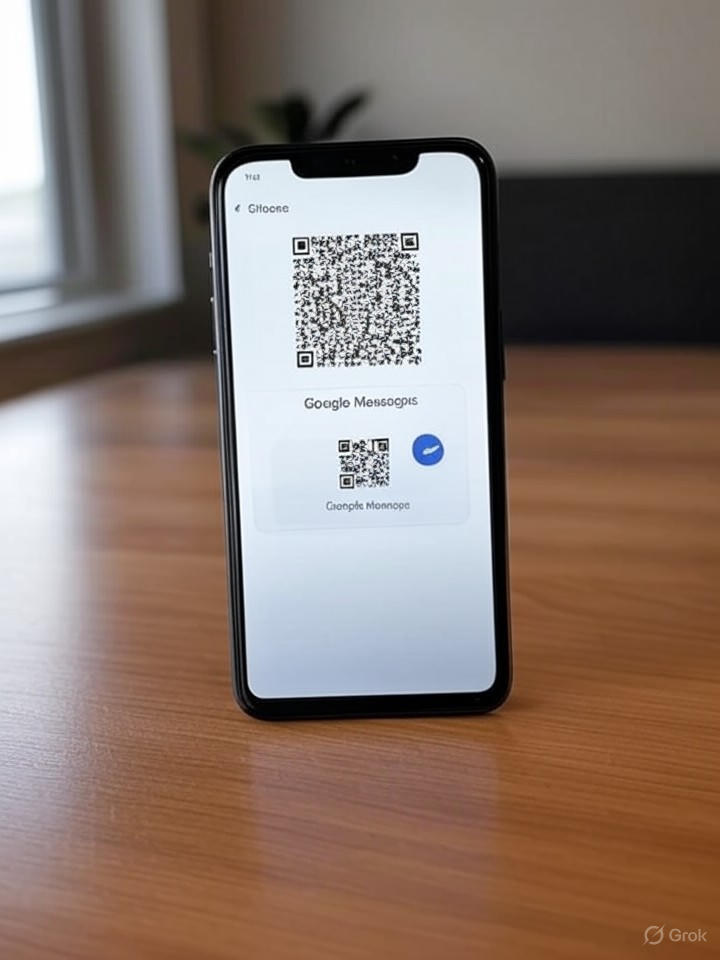In an era where digital communication is increasingly vulnerable to impersonation and cyber threats, Google is quietly testing enhancements to its Messages app that could redefine user trust in texting. The tech giant has introduced a beta feature allowing users to verify the identity of their chat partners through QR codes, a move aimed at bolstering security in end-to-end encrypted RCS conversations. This development comes as part of Google’s broader push to make messaging safer, building on existing encryption checks that rely on cumbersome numerical codes.
The new system simplifies verification: users can generate a QR code within the app, which their contact scans to confirm the encryption keys match, ensuring no man-in-the-middle attacks are at play. Early reports indicate this feature is rolling out to beta testers, with a full launch anticipated later in 2025. Insiders note that while traditional methods like manually comparing safety numbers remain available, the QR approach offers a more intuitive, user-friendly alternative, particularly for non-technical users.
Enhancing Encryption with User-Centric Design: As cyber threats evolve, Google’s shift toward QR-based verification reflects a strategic response to user feedback on the complexity of existing security protocols, potentially setting a new standard for mobile messaging apps.
This innovation isn’t emerging in a vacuum. According to a recent article from TechGenyz, the QR code method replaces lengthy code comparisons, making it easier to confirm secure RCS chats without sacrificing robustness. The feature integrates seamlessly with Google Messages’ existing end-to-end encryption, which has been a cornerstone since its expansion to RCS in 2020. For industry observers, this signals Google’s intent to compete more aggressively with apps like WhatsApp and Signal, which have long emphasized verifiable security.
However, the rollout isn’t without challenges. Beta users have reported occasional glitches, such as delays in QR code generation, echoing past issues with RCS activation as detailed in community forums on Google’s support site. These hiccups highlight the technical hurdles in scaling such features across diverse Android ecosystems, where carrier compatibility remains a variable.
The Broader Implications for Messaging Security: By prioritizing verifiable identities, Google is addressing a critical gap in chat security, where impersonation scams have surged, potentially influencing regulatory discussions on data protection standards worldwide.
Beyond verification, Google is layering in AI-driven tools to flag sensitive content, as noted in a report from Zamin.uz. This “Sensitive Content Warnings” feature blurs potentially harmful images, adding another defense against unsolicited or malicious media. Combined with QR verification, these updates could reduce the risks associated with phishing and spoofing, which have plagued SMS and RCS alike.
For enterprise users, the implications are profound. Google’s emphasis on compliance and security, as outlined in resources like M.io’s overview, positions Messages as a viable tool for secure business communication. Yet, questions linger about privacy: does scanning QR codes inadvertently reveal more user data to Google? Industry analysts suggest this could prompt scrutiny from regulators, especially in light of past controversies over Google’s handling of verification texts, as covered in a 2019 piece from 9to5Google.
Future-Proofing Against Emerging Threats: As Google refines this feature, it may catalyze similar innovations across the industry, urging competitors to adopt more accessible verification methods amid rising concerns over AI-generated deepfakes in messaging.
Ultimately, this QR code initiative underscores Google’s commitment to evolving messaging security in a post-SMS world. While still in beta, its potential to foster trust without complexity could reshape how billions communicate daily, provided the company navigates the balance between innovation and user privacy effectively.




 WebProNews is an iEntry Publication
WebProNews is an iEntry Publication